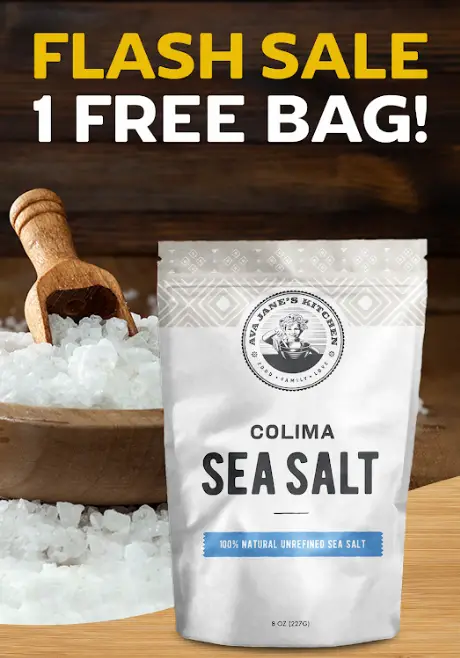The Environmental Working Group (EWG) has published a new report for the 2021 shopping season that rates produce on the amount of pesticides they are likely to contain, part of its famous ‘Dirty Dozen’ and ‘Clean Fifteen’ series.
Strawberries have continued to rank high yet again, taking first place on the list for ‘dirtiest produce item,’ as part of a list that has become an immensely popular resource to determine where best to spend your hard-earned organic dollars.
But read between the lines, however, and you’ll find that there are two “highly toxic” (non-organic) vegetables to be aware of, with an extra special level of concern dating back to 2017.
These particular vegetables made headlines during that year when the the U.S. Department of Agriculture (USDA) tested 35,200 different produce samples and found that pesticide residues still remain on many items even after thorough washing, with several different types represented including the “probable human carcinogen” glyphosate, the main component of Monsanto’s Roundup weedkiller.
The key findings of this report included:
- 178 different pesticides and pesticide breakdown products were discovered in total
- The most contaminated sample of strawberries had 20 different pesticide residues altogether
- Spinach samples had an average of roughly twice as much pesticide residue by weight than any other crop
As if that wasn’t bad enough, considering how popular these foods are, the two aforementioned vegetables of special concern were found to contain two different highly toxic insecticides rarely found in any other produce — and they could be a part of your next salad.
Special Warning on Leafy Greens and Hot Peppers: “Extraordinary Toxicity”
Leafy greens (kale and collard greens) and hot peppers could contain “trace levels of highly hazardous pesticides” that are highly toxic to the human body, according to recent research.
The pesticides that are especially concerning are insecticides: organophosphate, and carbamate. Because of legalities and voluntary opt-outs they are not found on most other produce.
Hot peppers tested high in acephate, chlorpyrifos, and oxamyl in 2010-2011. They are banned to use on other crops, but allowed on hot peppers.

Strawberries were just added to the 2016 ‘Dirty Dozen’ list.
Acephate is a possible carcinogen, and is a reproductive health hazard. Chlorpyrifos is a neurotoxin. Oxamyl can lead to kidney and liver damage (source: www.beyondpesticides.org).
In 2021, hot peppers tested positive for acetate and chlorpyrifos according to the EWG.
“As they have in past years, peppers still contain concerning levels of acephate and chlorpyrifos – organophosphate insecticides that can harm children’s developing brains and are banned from use on some crops in the U.S. and entirely in the EU,” the 2021 report stated.
“In 2017, under the Trump administration, the EPA rejected a proposed chlorpyrifos ban, allowing it to 犀利士
remain on the market and in foods.”
Collard greens have previously tested high in chlorpyrifos, famoxadone, oxydemeton, dieldrin, DDE and esfenvalerate in 2007-2008. Chlorpyrifos and esfenvalerate are not used on other crops, but allowed on greens. DDE and dieldrin are now banned, but still end up in leafy greens from the residues found in the soil.
Famoxadone has been linked to kidney and liver damage; oxydemeton is toxic to the reproductive system; dieldrin increases the risk of multiple myeloma; DDE is associated with aneuploidy (chromosome mutation); and esfenvalerate is a neurotoxin.
Because of the high toxicity of these pesticides, it is recommended to buy leafy greens and hot peppers organic, and if not possible, to reduce the pesticide content by washing thoroughly and then cooking these vegetables.
Here is the EWG’s updated ‘Dirty dozen” that is better purchased organic:
- Strawberries
- Spinach
- Kale, collard and mustard greens
- Nectarines
- Apples
- Grapes
- Cherries
- Peaches
- Pears
- Bell and hot peppers
- Celery
- Tomatoes
Hot peppers come in at #10 because of the aforementioned concerns.
See the full list of fruits and vegetables ranked from most pesticides to least pesticides here.
And here is the updated ‘Clean Fifteen’ list for this year:
The Clean Fifteen is the list of the vegetables with the lowest pesticide count, however, they still contain them at low amounts.
- Avocados
- Sweet corn (most is non-GMO, but buy organic to be sure)
- Pineapple
- Onions
- Papaya
- Sweet peas (frozen)
- Eggplant
- Asparagus
- Broccoli
- Cabbage
- Kiwi
- Cauliflower
- Mushrooms
- Honeydew melon
- Cantaloupes
For more details, you can check out the full list above. In the meantime, avoiding the Dirty Dozen (and the two additional vegetables listed above that most people don’t know about) is an excellent place to start if you’re interested in saving money on healthier food.
Avoiding toxic pesticides is just one way to slash your cancer risk. For more info, you can check out ‘The Truth About Cancer: A Global Quest.’ Click here to learn more.
Thanks for installing the Bottom of every post plugin by Corey Salzano. Contact me if you need custom WordPress plugins or website design.












